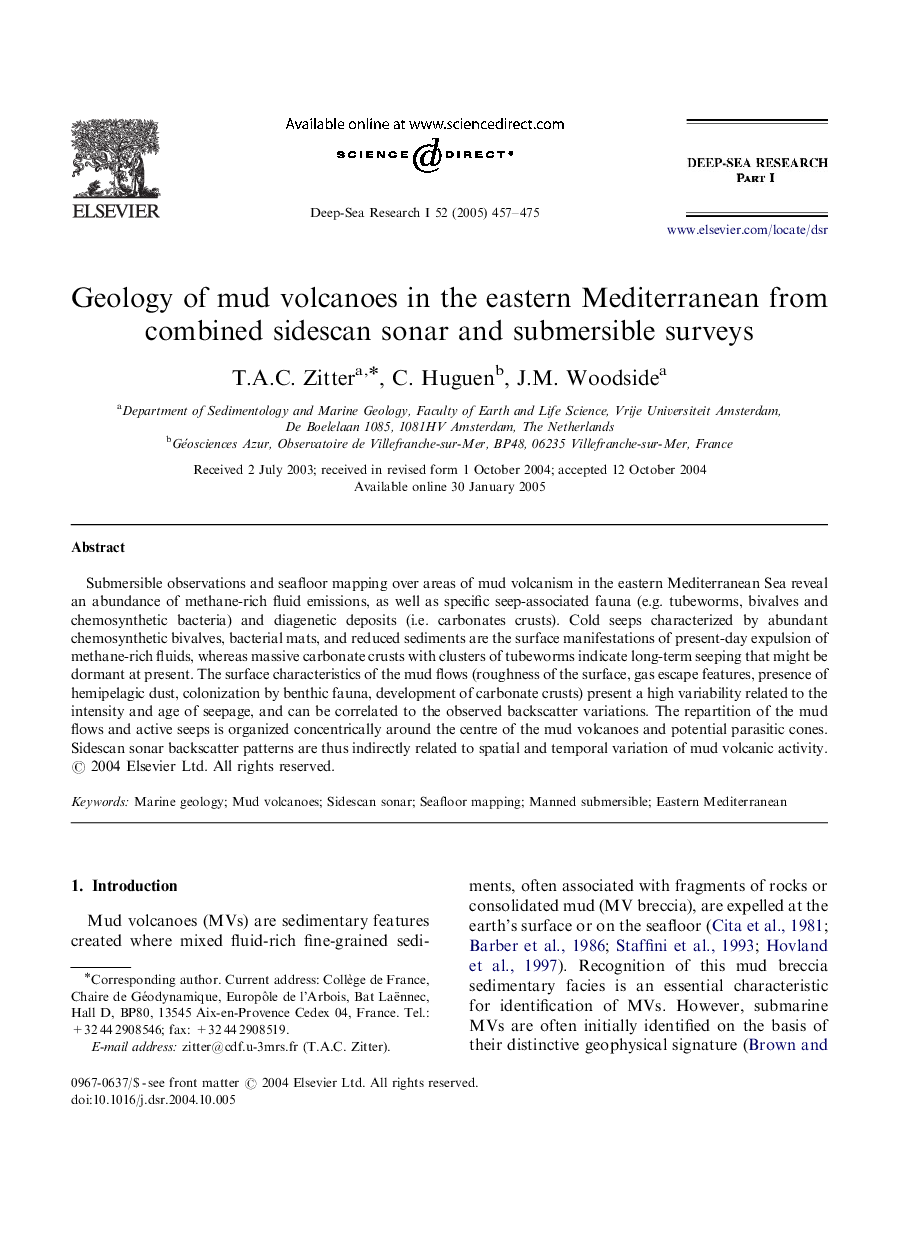| Article ID | Journal | Published Year | Pages | File Type |
|---|---|---|---|---|
| 9479822 | Deep Sea Research Part I: Oceanographic Research Papers | 2005 | 19 Pages |
Abstract
Submersible observations and seafloor mapping over areas of mud volcanism in the eastern Mediterranean Sea reveal an abundance of methane-rich fluid emissions, as well as specific seep-associated fauna (e.g. tubeworms, bivalves and chemosynthetic bacteria) and diagenetic deposits (i.e. carbonates crusts). Cold seeps characterized by abundant chemosynthetic bivalves, bacterial mats, and reduced sediments are the surface manifestations of present-day expulsion of methane-rich fluids, whereas massive carbonate crusts with clusters of tubeworms indicate long-term seeping that might be dormant at present. The surface characteristics of the mud flows (roughness of the surface, gas escape features, presence of hemipelagic dust, colonization by benthic fauna, development of carbonate crusts) present a high variability related to the intensity and age of seepage, and can be correlated to the observed backscatter variations. The repartition of the mud flows and active seeps is organized concentrically around the centre of the mud volcanoes and potential parasitic cones. Sidescan sonar backscatter patterns are thus indirectly related to spatial and temporal variation of mud volcanic activity.
Keywords
Related Topics
Physical Sciences and Engineering
Earth and Planetary Sciences
Geology
Authors
T.A.C. Zitter, C. Huguen, J.M. Woodside,
